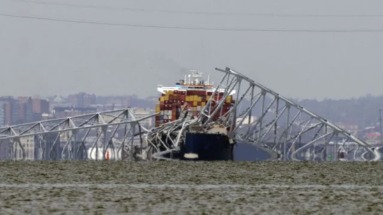
Advertisement
The vessel involved in the tragic incident, the Dali, was departing from Baltimore bound for Colombo, Sri Lanka, with a total of 21 crew members and two pilots aboard. This massive ship measures an impressive 948 feet (289 meters) in length, equivalent to the span of three football fields. Laden with containers, the vessel was stacked high, although its capacity allowed for twice as much cargo. Following the accident, safety investigators were able to retrieve the ship’s black box, a critical device containing valuable data such as the vessel’s position, speed, heading, radar information, bridge audio recordings, radio communications, and alarms.
Remarkably, the Dali had been involved in a previous incident in the port of Antwerp, Belgium, back in 2016, when it collided with a quay while attempting to depart the North Sea container terminal. Subsequent inspections conducted in June 2023 in San Antonio, Chile, revealed deficiencies in the vessel’s propulsion and auxiliary machinery, as reported by data available on the public Equasis website, which serves as a repository for ship-related information.
The Singapore-flagged vessel is owned by Grace Ocean Pte Ltd, according to data from the London Stock Exchange Group (LSEG). Management of the ship falls under the purview of the Synergy Marine Group, while Maersk charters the vessel for its operations.
Turning to the bridge that suffered the catastrophic collapse, the Francis Scott Key Bridge served as one of the vital transportation arteries for crossing the Baltimore Harbor. On any given day, the bridge accommodated the passage of approximately 31,000 vehicles, translating to a staggering 11.3 million vehicles annually. Constructed with a steel framework, the bridge spanned four lanes wide and ascended to a height of 185 feet (56 meters) above the Patapsco River.
Opening its lanes to traffic in 1977, the Francis Scott Key Bridge holds historical significance intertwined with its location. It traverses the Patapsco River, a site where Francis Scott Key, the author of the United States’ national anthem, the “Star-Spangled Banner,” was inspired to pen the iconic verses in 1814. This inspiration stemmed from Key’s eyewitness account of the British defeat at the Battle of Baltimore and the subsequent bombardment of Fort McHenry, marking a pivotal moment in American history.
